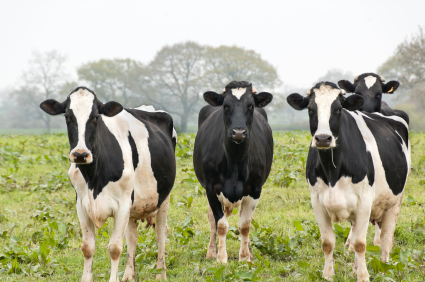
by Dr. Sherri J Tenpenny, DO, AOBNMM, ABIHM
Discussions regarding the cumulative amount of mercury and aluminum in vaccines have risen to the forefront of many discussions. I have been reviewing the package inserts of every US approved vaccine and adding up the total amount of foreign matter (by weight) being injected into humans. To do this, I created a spreadsheet to log every ingredient in every vaccine, including the amount of each substance listed as milligrams, micrograms or even nanograms. Believe me when I say, this has been a time-intensive, colossal undertaking.
I started by listing all the vaccines across the top row of the spreadsheet – there are at least 60 vaccines currently approved for the U.S. market, and there are 250 more on the way. Working with this page, I began to list every chemical and every cell type in the first column. In addition to viruses such as polio, measles or influenza, vaccines contain at least 130 different ingredients such as metals, chemicals, yeast, antibiotics, sucrose, lactose, and casein. Vaccines have foreign proteins including DNA from humans (albumin and aborted fetal cells) and DNA from animals (chickens, cows, pigs, guinea pigs, monkeys and even insects.)
Most of these ingredients fall into a group called excipients, with subcategories that include adjuvants, which enhance antibody production; stabilizers, which prolong shelf life; and preservatives, which prolong the shelf life of vaccine components. Examining the excipient list more closely, I noticed a number of different bovine ingredients within the various vaccines:
- Bovine casein (milk protein)
- Bovine extract
- Bovine cassation acids
- Bovine serum albumen
- Bovine calf serum
- Bovine formula fed calf serum
- Bovine calf serum protein
- Fetal bovine serum (FBS)
I found this to be curious. Why eight different bovine ingredients? What are the differences between each type of ingredient that necessitates a distinct listing? When I investigated this further and I was appalled by what I found.
Cow Parts Used for Vaccines
Why are cow parts used for cell cultures and to make vaccines? According to the FDA, “simply because cows are very large animals, commonly used for food, and thus much material is available.“
Wow. Really?
The FDA and other sources go on to report that parts of the slaughtered cows used to make vaccines include lactose and casein from cow’s milk, glycerol from the tallow (fat), gelatinderived from connective tissue, bones, and tendons, and galactose from circulating red blood cells. The milk proteins and gelatin are considered to be stabilizers and are used to “prevent viral degradation.” Allergies to these ingredients have been reported after vaccination. (examples: hereand here)
Calf serum is the liquid portion of a blood that remains after red blood cells, white blood cells, proteins, platelets and clotting factors are removed. Albumin is the most abundant type of protein in bovine serum.
Various classifications of bovine serum are used, based on the animal’s age at the time of collection. This is important because the age of the animal impacts the characteristics of the serum. Industry standards classify the serum according to the following guidelines:
| Description by Age | Age |
| Fetal bovine serum | Intra-uterine fetus |
| Newborn calf serum | Less than 21 days old |
| Formula-fed calf serum | Less than 22 weeks old |
| Calf bovine serum | 21 days to 12 months old |
| Adult bovine serum | 12 months or older |
Fetal Bovine Serum
Fetal bovine serum (FBS) is the most widely used, the most difficult to obtain and the most expensive cell culture promoter used in drug manufacturing. In my opinion, FBS is also the most disgusting and disturbing type of serum used in vaccines. Serum is a complex mixture of biological constituents and, even after 50 years of laboratory use, the majority of the bovine subunits have not been fully identified. The age, sex, genetics, quality of food consumed by the mother, and the maturity of the extracted cells creates an enormous amount of lot-to-lot inconsistency. In fact, serum and albumin can be essentially “designed” to meet the needs of a customer by feeding baby calves specialized formula diets.
Essentially this means every batch is a completely new experiment. According to a 2014 article on ResearchGate.com:
A recent analysis revealed that FBS contains approximately 1,800 different proteins and more than 4,000 metabolites. The proportions of each vary between different batches and vary by the health of the animal from which it is harvested. FBS has been known to contain adverse factors, like endotoxins, mycoplasma, viral contaminants and even prions that can lead to bovine spongiform encephalopathy, or BSE.
BSE is a progressive neurological disorder of cattle commonly called ‘mad cow disease.’ When the FDA was asked, “Do all bovine materials have the same risk of transmitting the BSE agent?”, this was their response:
Scientists have found that different bovine tissues contain different amounts of the BSE agent. It is generally believed that the highest amounts of infectivity are found in the brain and spinal cord from animals in the final stages of clinical disease. Some tissues, such as skeletal muscle and milk, have never been shown to have any infectivity. However, the slaughtering and butchering methods used to obtain tissues and prepare materials can affect the amount of infectivity that may be present. Also the production processes used to prepare bovine-derived materials (such as heat sterilization and chemical treatment) may reduce or remove infectivity.
Just like the quality of your vegetables selected at the local market is dependent upon the quality of the farmer, the serum used to make vaccines is dependent upon the health of the cow, the meticulousness of the butcher and the truthfulness of the manufacturer’s source of cattle.
Cleaning the Serum?
To remove most of the contaminants, each batch of bovine serum must be extensively tested and subjected to a list of treatments before being packaged for sale. The overall testing process is labor intensive and can take weeks to months to complete. One step often used to eliminate the contaminants is irradiation of the serum, but the process is not 100% complete nor is it 100% effective. When the process complete, FBS is labeled with different grades, from different suppliers, and from different countries of origin. The final products contain differing amino acids, sugars, lipids and hormones. If the endotoxins are not completely removed, they can induce fever and inflammatory responses in those injected with the serum.
Learn The Truth About 'Herd Immunity' Now
Cows are occasionally sent to slaughter because they are ill, crippled or to simply thin a herd. If a cow is found to be pregnant during the removal of its internal organs, the uterus is quickly moved to a specialized extraction area so the fetal blood can be harvested within 30 minutes of the mother’s demise. The plebotomy is done by inserting a sterile vacuum collection apparatus directly into the heart. The fetus must be at least 3 months of age or the heart is too small for puncture.A 3-month fetus yields about 150 ccs of serum while a near-term fetus (9 months) can yield up to 550 ccs. The heart must be beating to ensure the blood remains uncoagulated and all blood can be extracted from the fetus; therefore, it is presumed that the fetus is alive at the time of the extraction. After the blood is removed, the remains of the fetus are processed for animal feed. Approximately 500,000 liters (132,000 gallons) of FBS are sold per year worldwide, which means at least 1,000,000 unborn calf fetuses are subjected to the brutal harvesting procedure each year. The complete details of the entire brutal procedure can be found here.
At the very least, this disturbing information should raise huge concerns regarding animal welfare and animal cruelty…and make you question what is coming through that needle?
Viral Contaminants in FBS
Could new viruses be forming?
“As I sit and count the number of immunizations that various populations receive that have these contaminant particles, I wonder if there is any data on sero-responsiveness in longitudinal [studies]?” (meaning, have we followed these children over an extended period of time to see if they have developed antibodies to viral contaminants?)
“Have we looked for health problems in these children to see if they have been caused by the viral contaminants in these vaccines?”
A response came from James S. Robertson, Ph.D., from The National Institute for Biological Standards and Control (NIBSC). He interrupted Dr. Myers stating,
“There is no evidence for any increase in the incidence of childhood [illnesses] since the onset of [the] measles and mumps vaccination program.”
His response was as incomplete as it was inaccurate.
A more accurate statement would have been,
“We have not identified any increase in childhood illnesses from bovine viruses or any cancer caused by avian retroviruses,” which begs the question: Are researchers actually looking for an association between viruses and illness?
In research, you can’t find what you’re not looking for. Identifying an association between viral contaminants and a long list of autoimmune, neurologic and other illnesses would be disastrous for the vaccine program. Because no one wants to find this association, funding for this type research is in short supply.
There has been very little argument among researchers over the last 20 years that contaminant viruses from cow and avian sources have frequently and consistently been detected in vaccines. What they do not agree upon, however, are the effects these extra viruses may be having on humans.
At the conclusion of the 2-day meeting, a CDC virologist, Dr. Walid Heneine, publicly cautioned the importance of “not generalizing or hypothesizing” that no harm can be caused by stray viruses in vaccines. He mentioned research conducted in 1997 by Weissmahr, et al. demonstrating that viral contaminants can replicate, meaning, they are capable of causing illness. Dr. Heneine concluded by advising that “prudence be followed” because even though the effect of some viruses are known, other illness-causing viruses may be present – and causing harm – that have yet to be detected.
Vaccines with Fetal Bovine Serum
Knowing more about each of the ingredients in vaccines should make you think twice about what is being injected into the body of your child and into your own arm. The vaccines that use fetal bovine serum during the manufacturing process include:
- All DTaP vaccines: Infanrix, Kinrix, Pediarix, Pentacel
- Teen Tdap vaccines: Adacel, Boostrix
- Tetanus boosters: DT, dT, TT (no longer readily available)
- Hepatitis A
- Polio
- ProQuad – (MMR + V)
- Japanese Encephalitis
- MMR
- Rotateq
- Rabies
- Varivax and
- Zostavax (shingles vaccine).
The next time your physician pushes you or your family to get one of these vaccines, think about the fetal bovine ingredient, one of many vaccines. Think about the repulsive way the serum is extracted from unborn cows. Then give the information you’ve read here – and on my other blogs – to your physician. Maybe s/he will learn a thing or two about what is coming through that needle.
Oh – and then ask, “Now that you know this, doctor, do you want this cow stuff injected into your children?” THAT could seriously be something they will be forced to think about.
 http://vaxxter.com/wp-content/uploads/2017/06/Jersey-Cows-in-Field-300x199.jpg 300w" sizes="(max-width: 425px) 100vw, 425px" />
http://vaxxter.com/wp-content/uploads/2017/06/Jersey-Cows-in-Field-300x199.jpg 300w" sizes="(max-width: 425px) 100vw, 425px" />
You need to be a member of Project Nsearch to add comments!
Join Project Nsearch